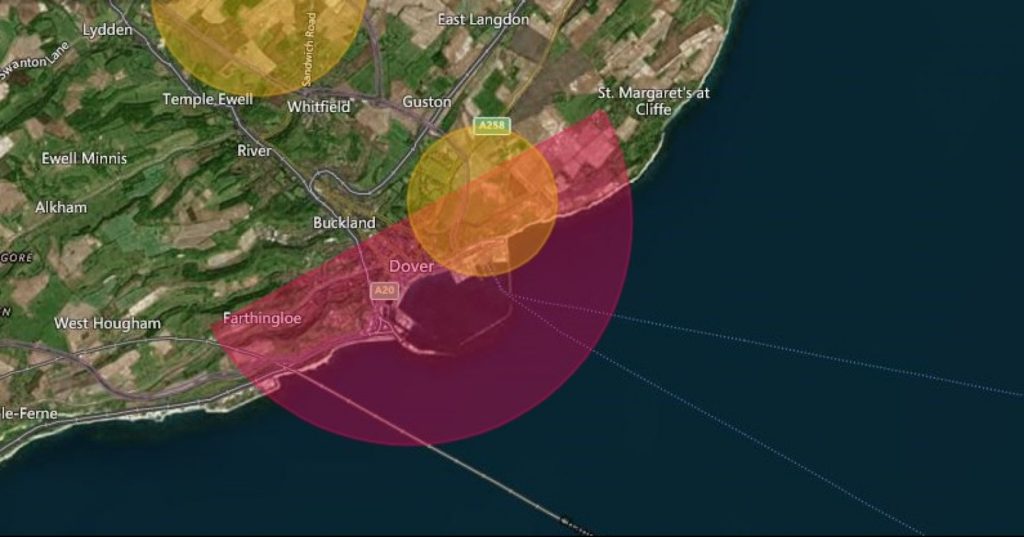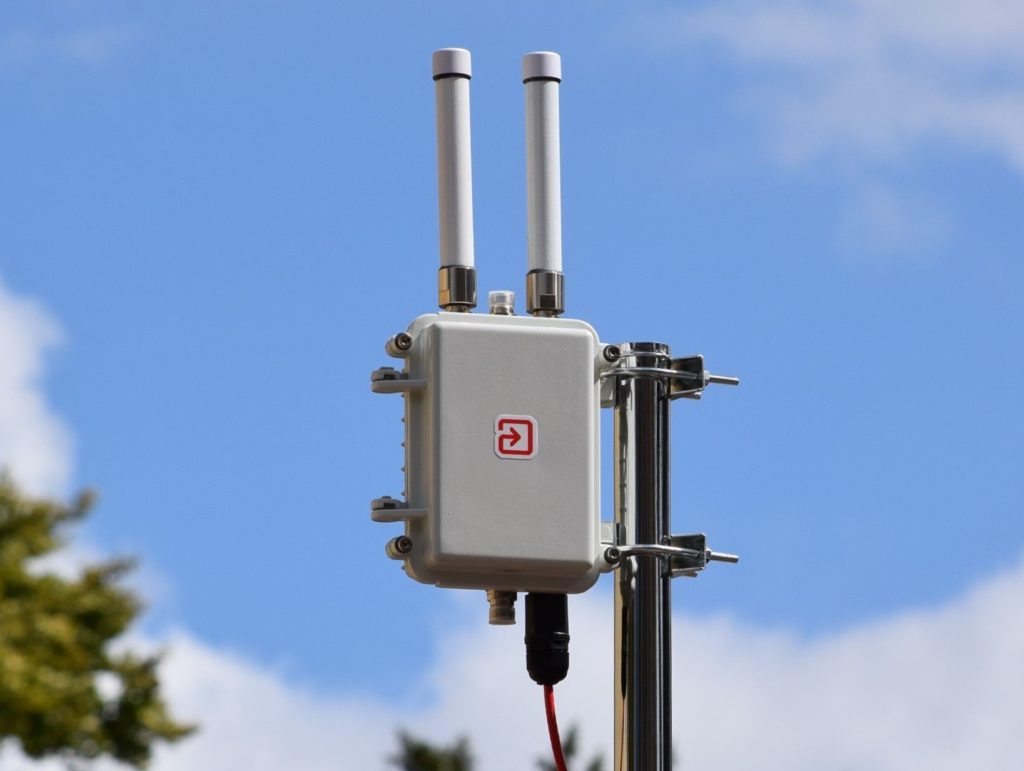With recent incidents at airports raising alarms, ports and other maritime assets are in need of protection from potential drone attacks, writes Brian Dixon
This past November 1, the Port of Dover became the first port in the UK to be a granted its own legislation to restrict the flying of unmanned aerial vehicles (UAVs). The Port made the application based on its status as a site of critical national infrastructure, with the Government giving its approval in the interest of public security. Consequently, all aerial drones operating without the prior permission of the Port of Dover Police are now forbidden from flying below an altitude of 1,000′ (305 m) within a 2.25-mile (3.6-km) radius of the Port.
While the Port declined to comment further on the matter other than to state that “there have been no [UAV-related] incidents” to date and that “this is just a security precaution”, there is arguably good reason for ports and terminal operators to be wary of the growing use of drones. However, while there have been reports of commercially-available models being modified to deliver explosive payloads in Syria for example, it’s not just the possibility of a real or perceived terrorist threat that ports need to ponder.

“Criminal gangs use drones for smuggling and surveillance. A drone could be used to identify targets in restricted, bonded areas or to smuggle goods out,” says Alex Farrant, senior researcher at Context Information Security, a UK-headquartered cyber security firm that is currently gearing up to launch COPTHORNE, a new scalable drone detection system.
Slated for commercial release towards the start of next year, the solar-powered system is described by the company as “a passive, cloud-based sensor network” capable of detecting both drones and their controllers within or around restricted areas. Employing innovative scanners that specifically look for radio frequency (RF) signals in bands used by UAVs, its “hardware-accelerated processing and nanosecond precision” allows it to pick out a drone from benign wireless signals at a range of up to 2 km, “even in noisy radio environments”.

Meanwhile, the system is able to geolocate a target once the signal comes within range of two or more scanners, with the detected signal metadata reported to a cloud-based server via a secure cellular virtual private network (VPN) where it is then analysed and checked against a set of user-defined rules. Should the signal prove to be that of an unauthorised drone, the COPTHORNE system will then send alerts in real-time to security personnel via a variety of channels.
Thanks to its proprietary profiling algorithm, the system is able to perform “precision fingerprinting” to determine the type of signal detected and any known hardware associated with it. Indeed, not only can COPTHORNE “distinguish between different models of drones and controllers from the same manufacturer”, but it can also recognise frequency-agile encrypted video downlinks. Moreover, as well as being able to create ‘virtual fences’ around an area or facility, this “location-agile and easy-to-deploy” system can also work inside buildings to detect unauthorised wireless devices if needed.
“COPTHORNE would give port security early warning of a rogue drone and could provide a location for both the drone and the controller, allowing law enforcement to locate the pilot. The unique radio forensics capability could also allow a recovered drone to be positively identified as being present at the scene of an incident, post-event,” Farrant says, noting that ports offer “an ideal location” for COPTHORNE to be deployed as they typically feature tall towers and cranes on which the system’s sensors can be mounted. “By elevating the sensors above the ground clutter, such as containers, detection range and geolocation accuracy is increased,” he says.
“COPTHORNE,” Farrant continues, “is entirely vendor agnostic and configurable, so it will detect and alert upon any RF signals from 70MHz to 6GHz. By remaining vendor agnostic, it can detect unknown threats, custom drones and other wireless devices, such as phones, which may be restricted in certain zones. Through the use of templates, operators can easily re-task a sensor to focus on distant threats, near threats, phones, drones or PTT radio for lone working.”
Not every drone, though, is a potential threat to security, with various ports around the world looking to deploy UAVs to enhance both productivity and security. Indeed, Israel’s Airobotics has now developed a fully automated drone surveillance system that, it asserts, enables industrial customers to collect “unlimited aerial data” while gaining enhanced visibility into potential security threats.
By autonomously deploying and landing individual drones, the Airobotics system, it says, “eliminates the logistics of drone operations” while providing on-demand aerial data and analytics capabilities. Able to greatly simplify security operations through the execution of pre-defined missions and the provision of real-time video feed to personnel on the ground, the Airobotics system is thus arguably well suited to perform numerous security tasks, such as perimeter patrol; routine surveillance; risk tracking and monitoring; threat assessment; and intruder deterrence.

































